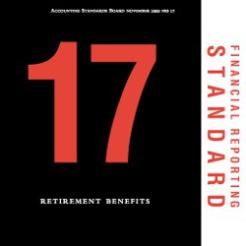Yes and no are not the only options available when it comes to FRS17 pension reports, says David Davison.
It’s approaching that time of the year when many charities will be getting letters from their local government pension scheme, asking if they would like the scheme actuary to carry out an FRS17 report to allow them to disclose the pension promises in their accounts. The vast majority of organisations will just respond 'yes', or indeed 'no', without really giving it too much thought, all the time being totally unaware that a third option exists that could potentially lower the deficit disclosed and be particularly valuable for organisations where pensions represent a material proportion.
So what is FRS17?
FRS17 is an accounting standard used to assess the balance sheet impact and pension costs associated with the operation of occupational pension schemes. For defined benefit arrangements (e.g. final salary pension schemes), the balance sheet asset or liability for the organisation is calculated as the surplus or deficit of the scheme assessed in accordance with assumptions appropriate for FRS17. The pension cost is a combination of the cost to the organisation of providing benefits built up over the past year and an interest charge applied to the liabilities built up in the past, offset by a credit in respect of the expected return on the scheme’s assets. The elements of the pension cost are again calculated in accordance with assumptions appropriate for FRS17.
FRS17 Assumptions
An organisation that is part of a multi-employer scheme which makes full FRS17 disclosures will be provided with a briefing note from the pension scheme actuary, outlining the assumptions they will base the calculations on and these will be carried out on a consistent basis for all participants. Therefore, in most circumstances these will not reflect the specific circumstances of the participating organisation. These assumptions are frequently more conservative than the organisation might consider a best estimate approach, and would therefore result in higher liabilities, and higher disclosed deficits.
In many cases, the assumptions proposed by the Scheme actuary will be based on the “average” index values and mirror those assumptions used for the trustees funding valuation and therefore may not be appropriate for the individual circumstances of each organisation.
The responsibility for the FRS17 assumptions adopted lies with the directors/trustees of each organisation. The agreement of the auditor is required, and the organisation should seek the advice of an actuary on the assumptions. The directors/trustees are entitled to request that the actuary carries out calculations on alternative assumptions which they feel might be more appropriate.
How assumptions can change from organisation to organisation
There is a considerable degree of flexibility in setting these assumptions and the impact of small changes to the assumptions can have a significant impact on the organisation’s balance sheet, asset/liability and pension costs. Some examples are provided in the table below.
Taking a scheme with a total liability of £3m, an indication of the impact of assumption changes on the balance sheet would be as follows:
Change to Assumption | Reduction in liability |
Discount rate increased 0.25 per cent per annum* | £180,000 |
Salary inflation less 0.25 per cent per annum (assuming 50 per cent of members are active) | £50,000 |
Price inflation and salary inflation less 0.25 per cent per annum | £180,000 |
Life expectancy reduced by 1 year | £80,000 |
* liabilities are reduced by increasing the discount rate and increased by reducing the discount rate | |
It is clear that setting assumptions can have a material outcome on the organisation’s balance sheet. The impacts on the pension costs are more difficult to quantify but pension costs are generally lower when liabilities are lower and assets are higher.
Summary
Assumptions used for FRS17 purposes are no more than that – assumptions. The assumptions used for the on-going funding of each scheme will be different and give rise to different costs and liabilities. The costs and liabilities associated with a cessation valuation (the amount an organisation has to pay if it leaves a scheme) will in turn be significantly higher.
It is not appropriate to “cherry pick” assumptions on a year by year basis as directors/trustees need to ensure a consistent approach is used. However, independent advice at an early stage will allow the scheme actuary’s assumptions to be considered, reviewed, alternative assumptions appropriate to the organisation to be set, if necessary, and ensure that the ultimate results need be run only once.
My colleague Alan Collins produced a helpful guide covering these issues for Universities and Colleges; however the principles are applicable for the charitable sector as a whole.
It’s well worth considering!









